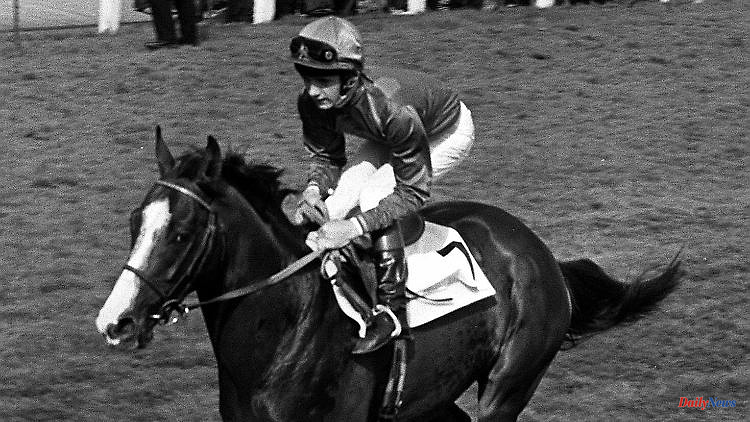In the 1980s, Shergar galloped into the hearts of the Irish people. Then the valuable racehorse disappeared, apparently kidnapped by the IRA. The perpetrators received no ransom, but the animal paid with its life. To date, the case has not been resolved.
Winter nights in Ireland are often cold and foggy, like the perfect backdrop for a thriller. Just like the night in February 1983 when masked and armed men kidnapped a horse. Not just any, but a legend during his lifetime: Shergar, worth 11.5 million euros at today's exchange rate. To this day, the Irish thoroughbred stallion, who won the biggest races in England and Ireland by up to twelve lengths, has disappeared without a trace and is believed to have been dead for a long time.
The Irish people's memories of their "miracle horse" are alive and kicking. His story is "so bizarre and shameful an episode in Ireland's past that it only makes sense when set against the incredible scenes and ecstatic jubilation of his immortal season," Keith Duggan recently wrote in the Irish Times newspaper ". The journalist is referring to scenes like this: "You need a telescope to see the rest of the field," exclaimed BBC radio presenter Peter Bromley, as Shergar and his 19-year-old jockey Walter Swinburn finished ten horse lengths ahead on June 3, 1981 famous Epsom Derby won. Runner-up John Matthias said he briefly thought he was the winner at the end of the two-kilometre distance - because Shergar had long since disappeared over the hill past the finish line.
The British-trained "miracle horse" had previously taken three first places and one second place in four races in England. The ten-length lead Shergar then ran at Epsom remains the largest in the history of the race to date. Owner Karim al-Husseini, better known as Aga Khan IV, sold dozens of shares in the horse after the win, raising him £10million and forming an ownership syndicate.
The kidnappers - most likely members of the Catholic-Republican terrorist group IRA - were apparently unaware of this. According to all assumptions, the paramilitaries, who fought for the reunification of Northern Ireland with the Republic of Ireland in the decades-long civil war, hoped that Shergar would bring much-needed income for their "campaign".
The 1980s were a difficult time in Ireland, both economically and politically. Shergar's success represented something "even more priceless (than its monetary value): an uncomplicated Irish success story," according to journalist Duggan. The reality was grim: Ireland's economy was so ailing that the biggest TV entertainment show ran a special on emigration. The Boomtown Rats released an album entitled "Banana Republic". In fact, many Irish saw their country - corrupt and unstable - as a banana republic itself.
During these times, Shergar galloped into the hearts of the populace. After two more victories at The Curragh in Ireland and Ascot in England, and a surprisingly poor fourth place at Doncaster, Shergar was allowed to retire - at Ballymany Stud in County Kildare. As well as being an emotional anchor for many in Ireland, Shergar was also a hot commodity from a purely commercial point of view: breeding approval cost £80,000.
Then, on the night of February 8, 1983, masked men picked up head groom Jim Fitzgerald at his home and forced him to identify Shergar - there was little security, kidnapping was easy. Thanks to the simultaneous sale of horses at a nearby auction house, the police had no chance of tracking down the kidnappers. Fitzgerald was let go. But the kidnappers and their four-legged hostage remained missing.
Although the operation bore the IRA's signature, the terror group never officially claimed responsibility. However, Sean O'Callaghan, a former IRA commander and police informer, spoke about the details: Because most owners in the syndicate were well insured, the ransom demand of two million pounds did not fall on fertile ground. The kidnappers didn't think of that.
The second mistake was particularly tragic: the kidnappers had underestimated how complicated a thoroughbred stallion is to handle. According to O'Callaghan, the agitated horse severely injured his leg while being loaded. Under pressure from the extensive police presence, the kidnappers panicked. Instead of releasing Shergar, they would have shot the animal. "There was blood everywhere," O'Callaghan told the Irish Times, "the horse slipped on its own blood. There was a lot of cursing and swearing because the horse wouldn't die. It was a very bloody death."
Nevertheless, the perpetrators - or free riders - tried again and again to demand a ransom. Always unsuccessful. Shergar has never been found and his remains have never been found.












